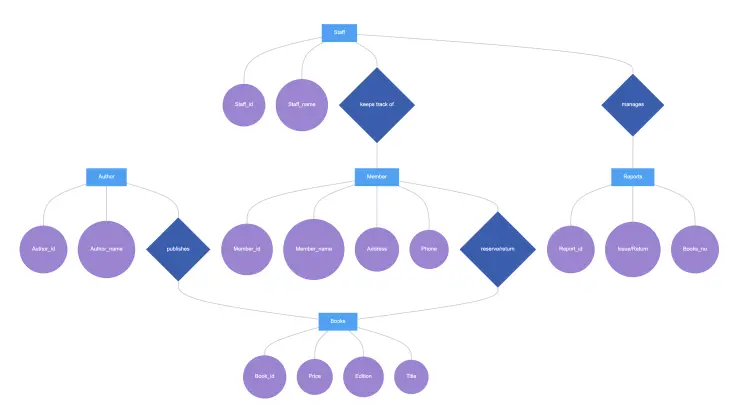This entity-relationship diagram illustrates a library management system. In this diagram, the staff keeps track of the member and manages reports. Each member has attributes like ID, Name, Address, and Phone. The members can reserve or return books. Each book has an ID, Price, Edition, Title, and Author.

Edit this diagram in Gleek
Library management process diagram code in Gleek
Books
Books–Book_id:oval
Books–Price:oval
Books–Edition:oval
Books–Title:oval
Author
Author–Author_id:oval
Author–Author_name:oval
Member
Member–Member_id:oval
Member–Member_name:oval
Member–Address:oval
Member–Phone:oval
Stuff
Stuff–Stuff_id:oval
Stuff–Stuff_name:oval
Reports
Reports–Report_id:oval
Reports–Issue/Return:oval
Reports–Books_no:oval
Author–publishes–Books
publishes:diamond
Member–reserve/return–Books
reserve/return:diamond
Stuff–keeps track of–Member
keeps track of:diamond
Stuff–manages–Reports
manages:diamond
About ER diagrams
We often make an entity-relationship (ER) diagram, ERD, or entity-relationship model, in the early stages of designing a database. An ERD is perfect for quickly sketching out the elements needed in the system. The ERD explains how the elements interact. ER diagrams can be shared with colleagues. Their simplicity makes them ideal even for non-technical stakeholders.
Similar ER diagram examples
Online store entity-relationship diagram
Inventory management system ER diagram (Chen notation)
Simple ER diagram example with Chen notation
Banking system entity-relationship diagram
Travel management system Er diagram
College management system ER diagram